Climatic stresses act on the packages throughout the entire duration of transport and storage. In the case of wooden packaging, temperature and humidity must be taken into account as climatic influences. As a packaging material, wood is hygroscopic, i.e. it can absorb moisture and release it, depending on the ambient humidity level of the air. During transport and storage, it is possible for boxes to be exposed to the outdoor climate and hence to be exposed to higher relative humidity or to direct precipitation. This causes the moisture content of the wood of the box to rise, with an attendant reduction in strength. 2.1 Protection from spray/dust In order to protect the contents of the boxes from the direct effects of moisture or stress caused by dust or sand, the underside of the lid is furnished with a stable moisture barrier and the walls are lined with a barrier layer (kraft paper). This is necessary because cracks can form between the individual boards that form the walls as a result of the wood drying. Water can then ingress unhindered through these gaps, for instance as a result of a heavy fall of rain when transporting the boxes on open railcars or trucks. The climatic influences that are relevant for wooden packaging are temperature and humidity. Both of these influencing factors must be considered and assessed in relation to each other. 2.1.1 Temperature Temperature is a measure of the thermal state (energy content) of a material. Temperature is specified in °Kelvin, abbreviated to K or °Celsius, abbreviated to °C: 0 K = -273 °C and 273 K = 0.0 °C 2.1.2 Humidity Humidity is described in terms of absolute humidity AH and relative humidity RH. The absolute humidity is the quantity (mass) of water vapor per unit volume of air [m³]. Relative humidity is specified as a percentage and expresses the ratio of the absolute humidity to the saturation humidity of the air at a given temperature. Air always contains water in the form of water vapor. 2.1.3 Interaction between temperature and humidity Air can only absorb water vapor to a limited extent. When the air can absorb no more vapor, the residual water vapor forms mist or condensation. The air is not always saturated with water vapor. The quantity of water present in an unsaturated space (AH – absolute humidity) is given in grams of water per m³ of air. The absolute humidity mass depends on the air temperature.
These dependencies are shown in the following tables (Table 4 through Table 8). Using the values shown, it is possible to determine the expected climatic stresses for the impending transport and for the corrosion protection measures that need to be taken. Since the stress values given in Table 4 also determine the moisture content of materials (wood moisture content), it is possible to derive values for storage climates. The storage climate is of significance for the previous storage of hygroscopic materials to be used inside the packaging: 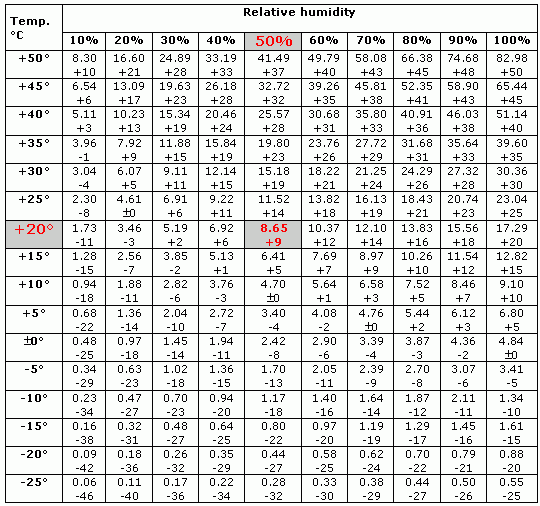
Table 4: Dependence of relative and absolute humidity on temperature The top value in each of the boxes describes the absolute humidity AH in g/m³, and the bottom value the dewpoint temperature, i.e. the temperature at which the absolute humidity AH shown corresponds to relative humidity RH of 100 %.
When packages are shipped across the world, they are transported through different climate zones, with the result that a wide range of different temperature/humidity constellations influence the packages and their contents. When shipping general cargo below deck on an ocean-going vessel, the enclosed space and the possibility of ventilation means that a lower intensity of external climatic stress is to be expected compared with what would be the case if the package were to be stored in the open air. When packages are shipped in containers, on the other hand, the climatic stresses can be far higher because transport is generally carried out in unventilated, closed ISO containers. The reason for such climatic stress in containers is the moisture introduced into the closed containers in the form of moisture contained in materials which is then released during the course of transportation as a result of changing temperatures and which can lead to the formation of condensation on the packaged goods or on the walls of the container. Table 5 below shows examples of possible temperatures for shipping in an unventilated, closed container during a voyage from Dresden to Beijing. Similar temperature profiles can be drawn up for other voyages. 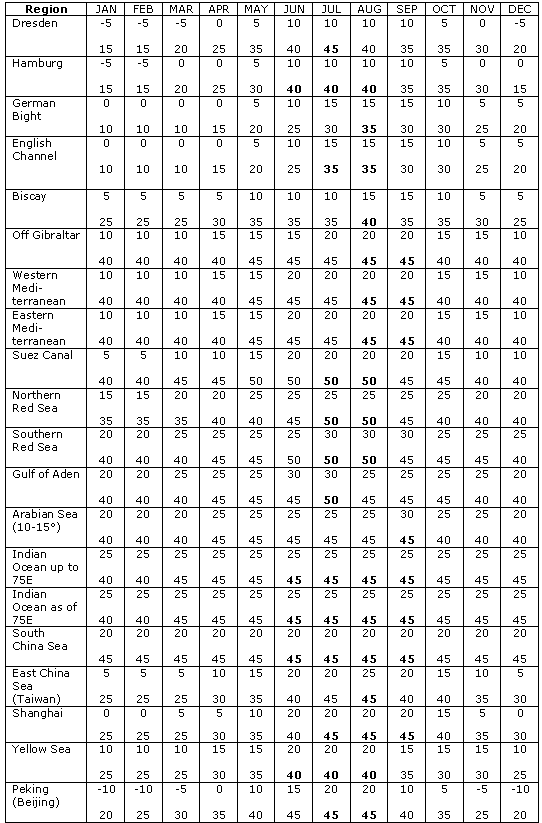 Maximum values for each region over the course of a year are shown in bold. Table 5: Sample temperature conditions for the internal temperature (in increments The following illustrations (Table 6 and Figure 7) provide a rough overview of the global climate zones. Additional information relating to specific locations can be found on the Internet at www.wetter.com: 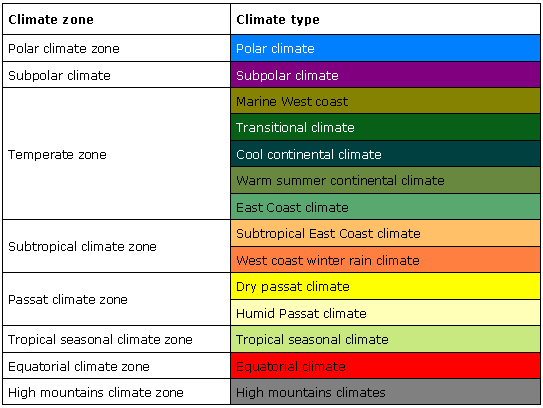
Table 6: Climate zones across the world – Neef classification 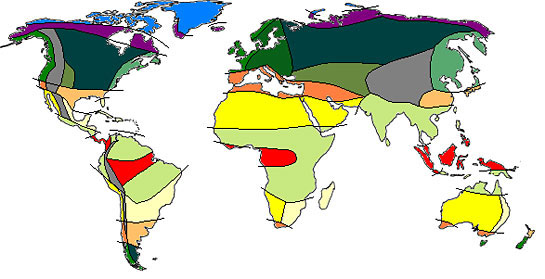
Figure 7: Climate zones across the world – Neef classification Further examples of the temperature and humidity conditions during shipping shown by the measurements in Table 7 and Table 8 that were collected by the BFSV during voyages to and through the tropics. 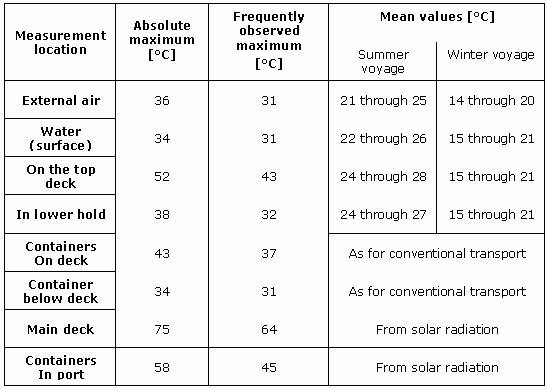
Table 7: Temperature stress during maritime shipping 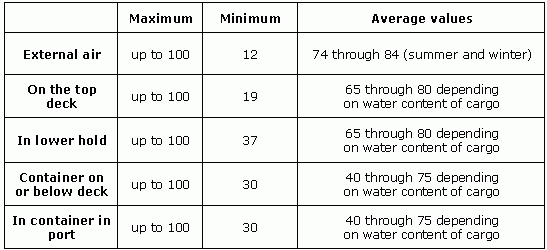
Table 8: Relative humidity stress during maritime shipping in % 2.2 Effects of climatic stress on the packages The climatic stresses during transport and storage are the reason why technical goods in packages must always be provided with corrosion protection. A stable, closed wooden outer packaging does not provide sufficient protection on its own. In the same way, goods that are transported in containers on sleds or similar either packaged or unpackaged are also provided with corrosion protection as necessary. Climatic stress also leads to biotic stress, such as mold growth. In the case of wooden packages, mold attacks the packaging container directly, usually on the inside of boxes. Mold growth on the wood of a box is of secondary importance for properly conserved packaged goods. |
| Top of pageContents |
